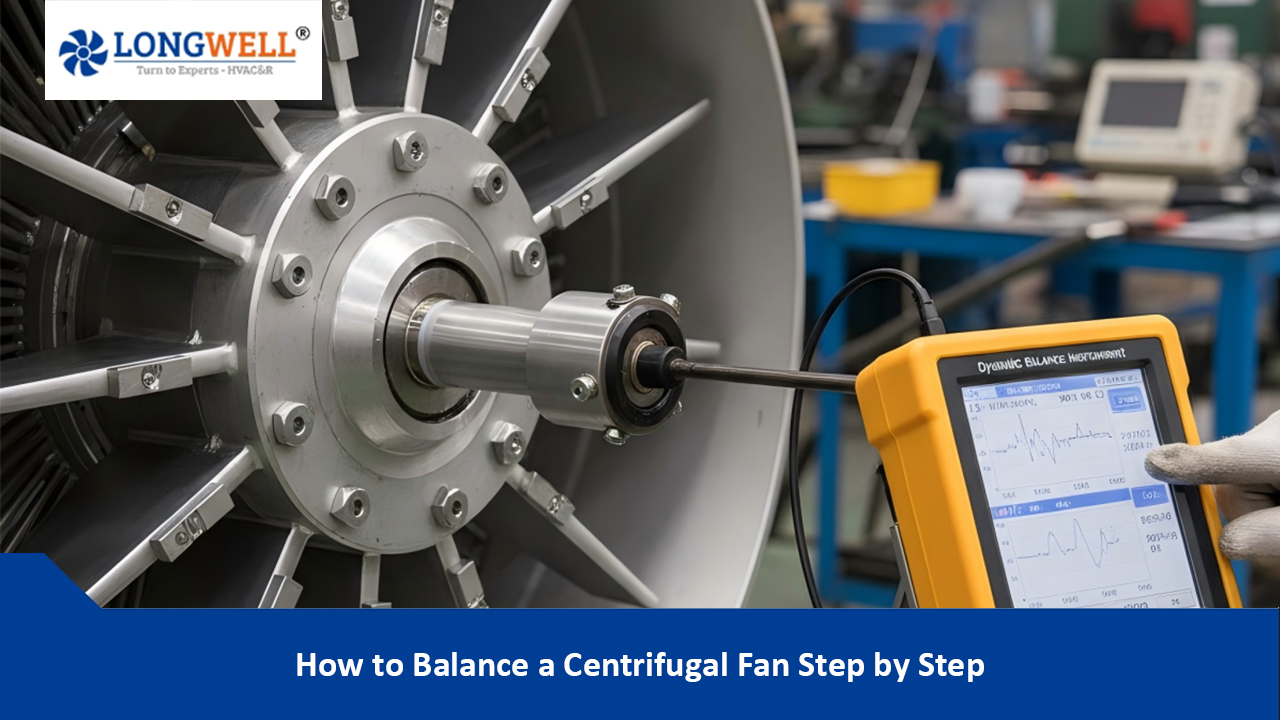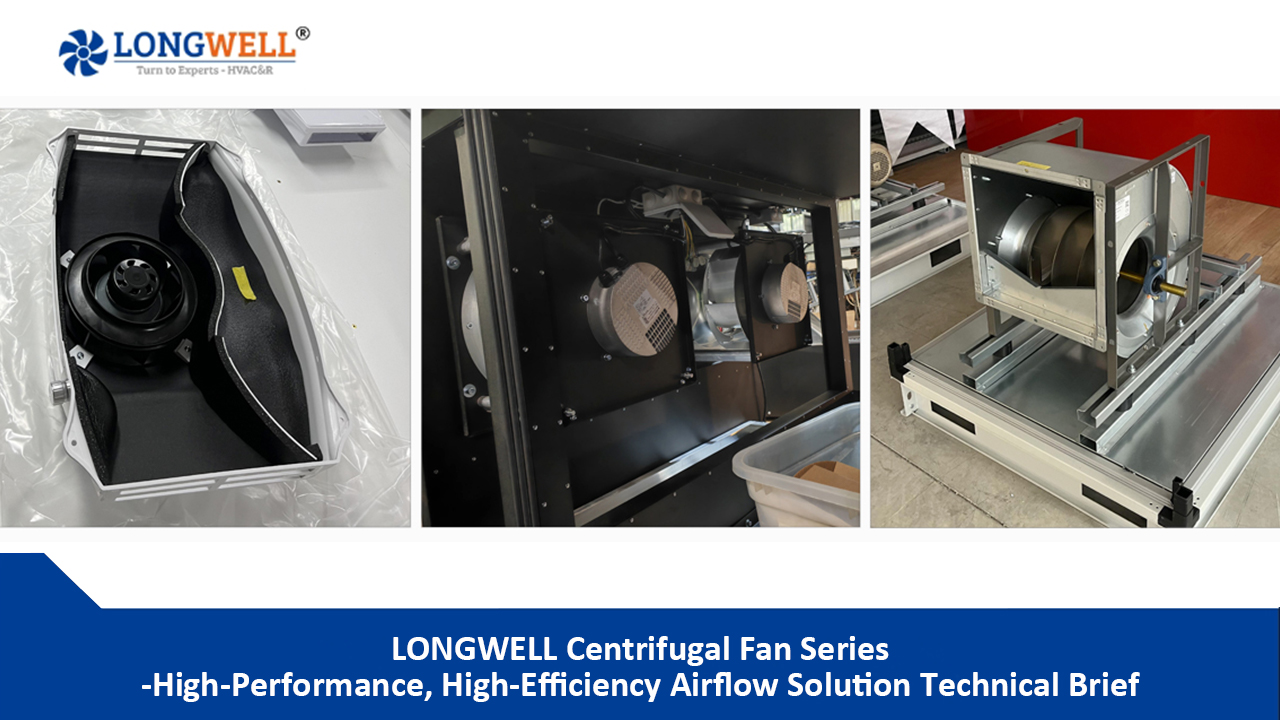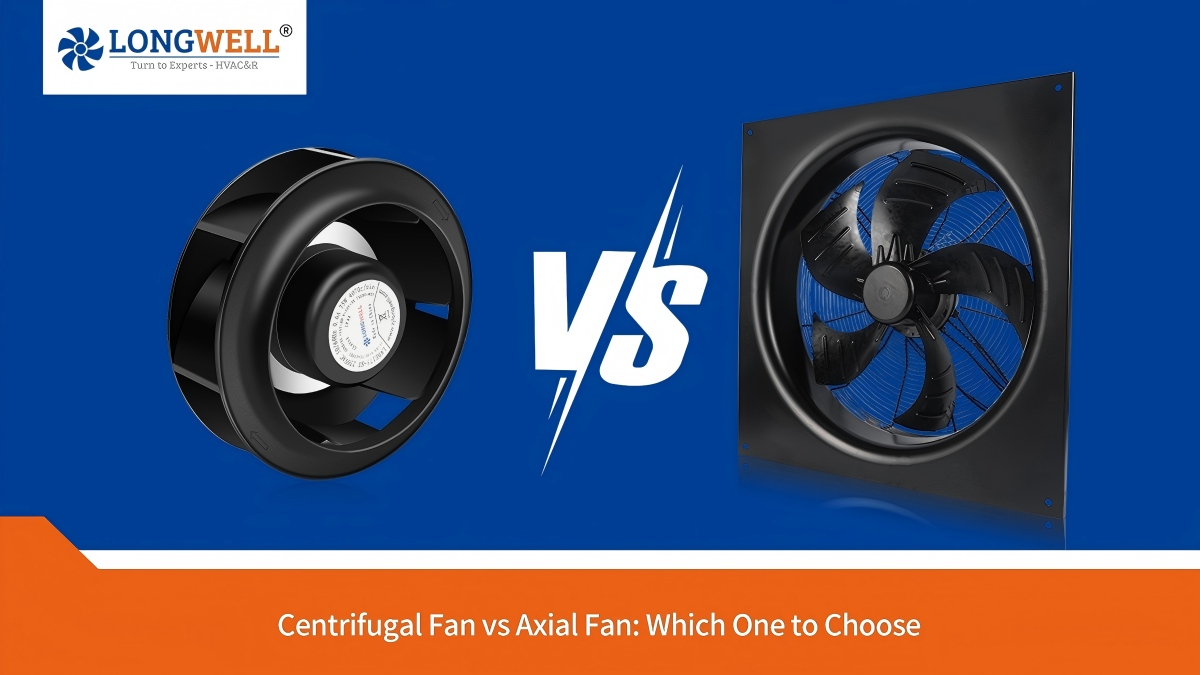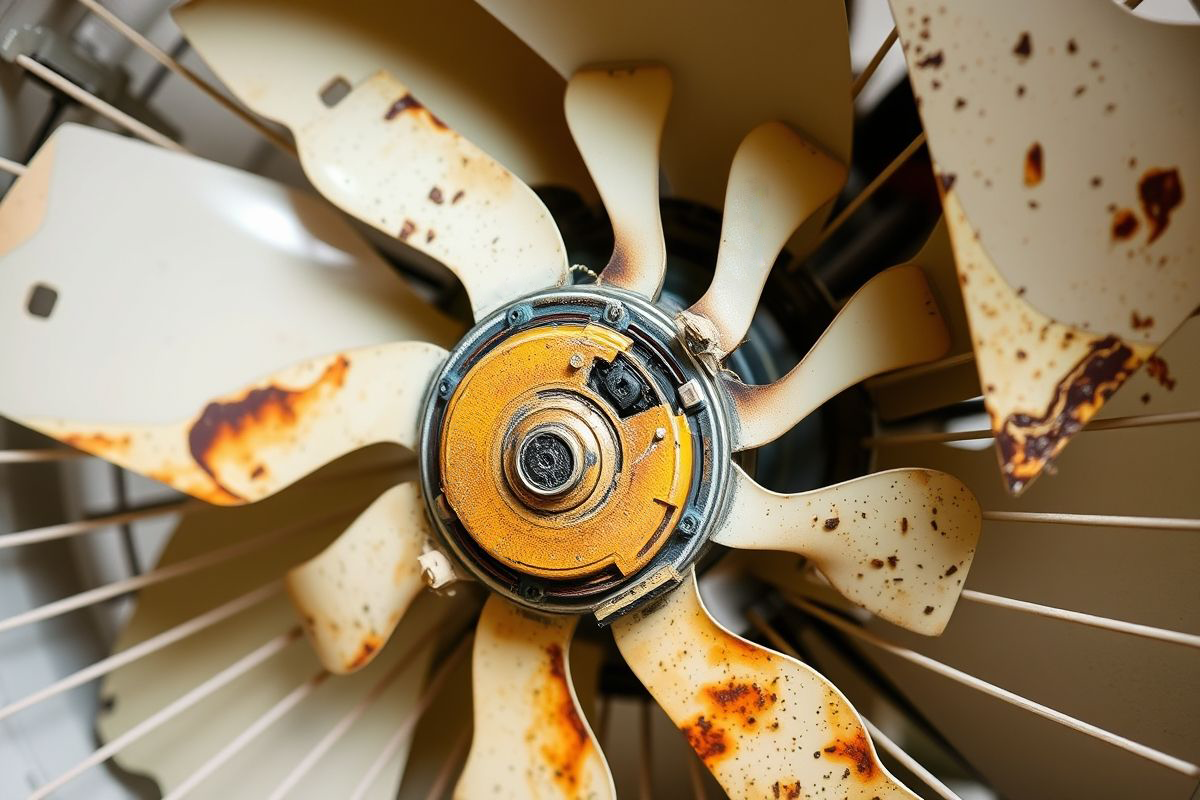
Introduction
The fan motor is an essential part of your AC system. It moves air and keeps your space cool when it’s warm outside. This motor also helps remove heat from the system. A well-working fan motor makes your AC run efficiently. Understanding how the fan motor operates and knowing when to replace it can help you feel comfortable and avoid costly repairs. This guide will teach you how to identify and repair issues with your AC fan motor.
Understanding AC Fan Motor Functionality
The fan motor is an important part of your HVAC system. It helps move air around, making your home feel comfortable. This motor does more than just push air; it also plays a key role in the cooling cycle.
The fan motor needs power to run. It makes the fan blades move and creates airflow. This airflow cools the refrigerant inside the condenser coils. This cooling helps the AC system lower the indoor temperature better.
The Critical Role of the AC Fan Motor in Cooling Systems
The condenser fan plays a key role in cooling. It runs on the AC fan motor. This fan draws air over the condenser coils. The coils contain hot, high-pressure refrigerant. As the air flows over the coils, it removes heat. This helps the refrigerant change into a high-pressure liquid. Because of this, the refrigerant can continue moving through the system and absorb more heat from your home.
The air from the condenser fan helps keep the compressor cool. The compressor is part of the condenser unit and is responsible for increasing the pressure of the refrigerant. As it operates, the compressor creates heat. If it overheats, it can become less efficient or even suffer damage. The airflow from the condenser fan helps reduce this heat, ensuring the compressor stays at a safe temperature.
The AC fan motor powers the condenser fan. This makes it a key part of the cooling cycle. If the fan motor stops working, it affects heat transfer. This can reduce cooling efficiency and could damage other parts of your AC system.
Different Types of AC Fan Motors and Their Applications
In home HVAC systems, there are two main kinds of fan motors: the condenser fan motor and the blower motor. Each fan motor has its own job that makes the cooling process work better.
The motors are found in different areas of the system. The condenser fan motor is located in the outdoor condenser unit. It drives the fan that pulls air over the condenser coils. This action helps to remove heat from the system.
The blower motor is found inside the air handler. This motor helps to move cool air throughout your home. It brings in warm air and pushes out cooled air. This keeps your rooms at a nice temperature.
Knowing how these two fan motors operate is key when you are fixing problems with your HVAC system. When you can tell which motor is causing an issue, it can help you identify the problem’s source. This way, you can ensure it gets fixed or replaced correctly.
Identifying the Need for AC Fan Motor Replacement
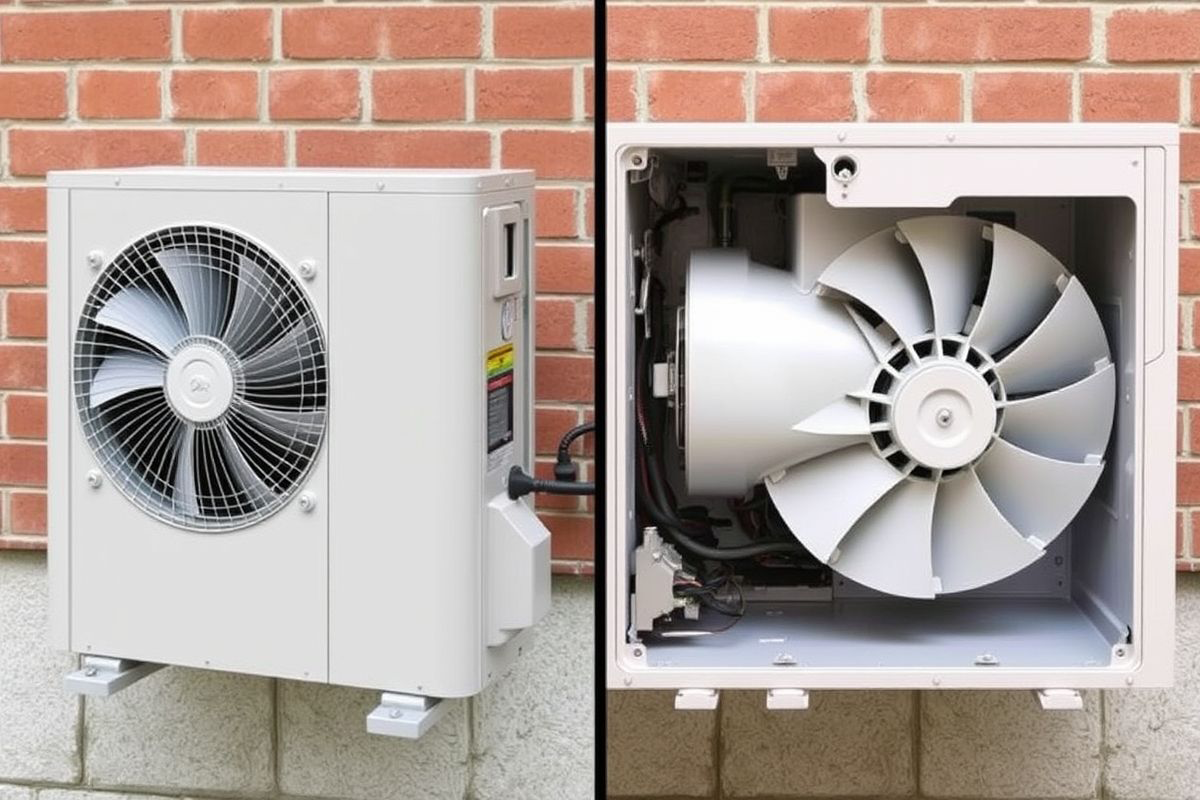
Noticing the warning signs of a failing fan motor in your AC is important. If you spot problems early, you can avoid frustrating breakdowns. This is especially helpful in the hot summer months when you need your AC the most.
If you ignore these signs, you might cause more damage. A simple motor replacement could become a larger, more expensive repair. It’s important to address these problems early. This will help keep your AC system running smoothly and your home comfortable.
Common Symptoms of a Failing AC Fan Motor
A broken AC fan motor gives clear signs that you should notice. If you spot these signs, try to fix the issue fast. This way, you can avoid more damage and higher repair costs. Here are some signs to look out for:
- Unusual Noises: If you hear strange sounds like grinding or squealing from the unit, it’s a warning sign. These sounds often mean there are worn bearings or issues inside the motor. They can get worse over time. So, it’s good to notice them early.
- Slow or Jerky Fan Blade Movement: If the fan blades move slower than usual or do not spin smoothly, the motor may be failing. This slow movement means the motor struggles to turn the blades properly.
- Overheating Motor: A motor that gets too hot is a big problem. If it feels warm and keeps running, it might have electrical issues. This situation needs quick attention to avoid damage to the motor and your AC system.
A faulty capacitor can make your AC system show signs of trouble. You might need to look deeper or get a professional to identify the real issue. If you act fast on these warning signs, you can prevent major problems and help your AC last longer.
Diagnosing AC Fan Motor Issues Before Replacement
When your HVAC system has problems, it’s important to figure out what’s wrong first. A broken fan motor could be the cause, but there may be other issues as well.
Before deciding to replace your AC fan motor, consider these points:
- Refrigerant Levels: Low levels of refrigerant can occur because of leaks. This can lower your system’s cooling ability and make it look like the fan motor is not working. Check to see if your refrigerant levels are okay.
- Electrical Connections and Voltage: If electrical connections are loose or rusty, they may stop electricity from reaching the fan motor. This can harm how well it works. Use a multimeter to check the voltage going to the motor. If it is too low, there is a problem that needs to be fixed.
Sometimes, you might need a professional HVAC technician for a better checkup. They have the right tools and skills to discover the true problem. This helps you get the correct solutions for your AC system.
Step-by-Step Guide to Replacing the AC Fan Motor
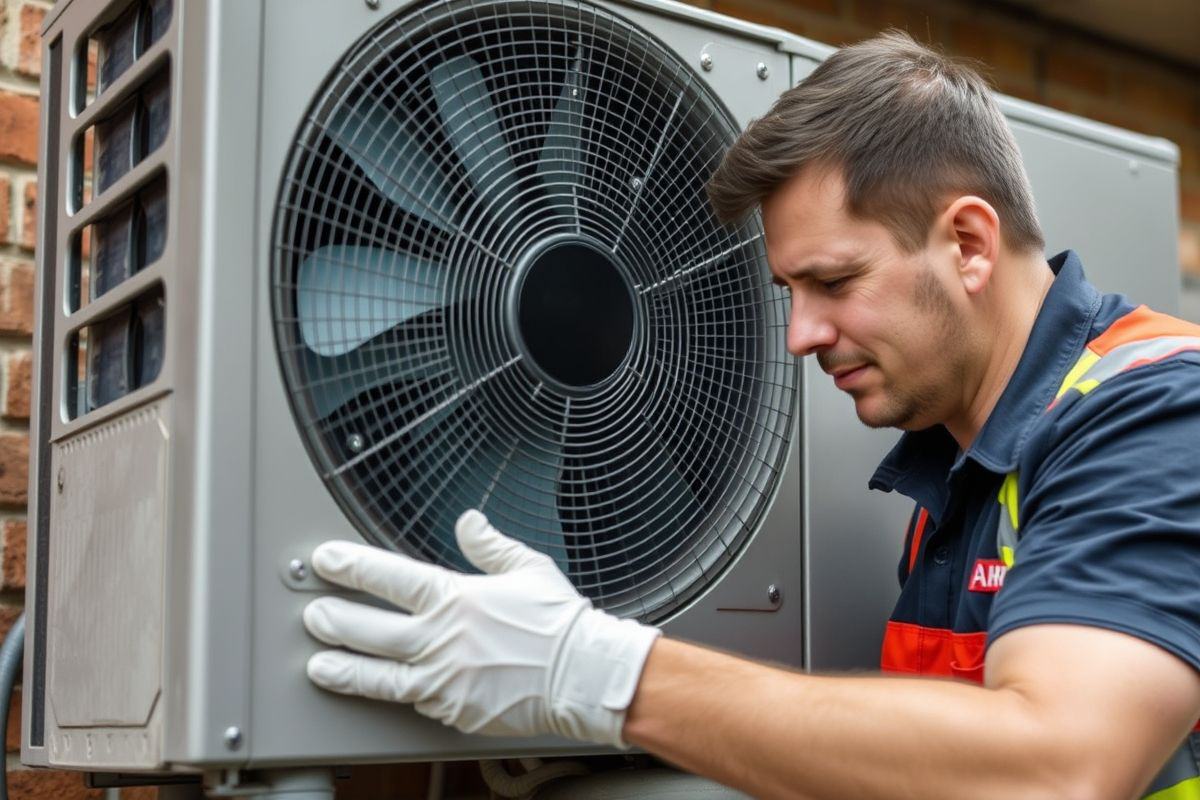
It’s smart to talk to a professional, especially for tough electrical jobs. But if you feel confident in your skills, you can try to change parts by yourself. You must understand the steps clearly before you begin working with any electrical parts.
- Always think about safety first when using electrical devices.
- Be sure to turn off the power before you work on your AC unit.
- This will help you stay safe and avoid electrical shocks.
Preparing for AC Fan Motor Replacement
Before you change the AC fan motor, getting ready is key. Collect all the tools you need. Make sure your work area is safe and organized. This will help make the job go smoothly and easily.
- First, turn off the power to the AC unit at the breaker box.
- This step is important because it protects you from electrical shock while you work.
- After the power is off, find the AC unit’s condenser, which is often outside your house.
- Then, remove the access panel.
Next, clean the space around the unit. Take away any trash, leaves, or dirt near the condenser. It’s also smart to change your air filter now. This will help your system run better when the new motor is installed.
Detailed Instructions on Removing the Old Motor
With the condenser unit in reach, locate the old motor. It is normally fixed to the outer part of the unit by several bolts or screws. Before you unplug any wires, make sure to take clear photos or label them. This will help you hook up the new motor correctly later on.
- Carefully take off the wires from the old motor.
- Make sure to avoid damaging any nearby parts.
- Next, unscrew the bolts that hold the motor in place.
- Gently remove the old motor from the condenser unit.
- Remember its position, so you can install the new motor correctly.
When you remove the old motor, look at the fan blade for damage such as cracks or bends. A damaged fan blade can block airflow and reduce the unit’s efficiency. If you notice any damage, it’s best to replace the fan blade with the motor.
Installing the New AC Fan Motor Correctly
- Carefully line up the new fan motor with the mounting spots in the condenser unit. Gently slide it into place to make sure it fits well. Use your hand to tighten the bolts that hold the motor. Then, use a wrench to tighten them more. Don’t over-tighten them, as this could damage the motor housing.
- Connect the wires to the new motor. Look at the pictures or labels you made earlier. Make sure each wire goes to the right terminal and fits well. Once you connect the wires, tuck them away carefully so they do not touch any moving parts.
- Before you close the access panel, check that the new motor gets power and works properly. Turn on the power to the AC unit at the breaker box. Watch the fan blade; it should spin smoothly and quietly. If you hear any strange noises or see it shake, turn off the power right away and check for any mistakes or loose connections in the installation.
Conclusion
In summary, understanding how your AC fan motor works is key for keeping your home cool. If you see signs that the fan motor is failing, it’s important to replace it carefully. This helps keep the air flowing and the right temperature in your home. You can do it yourself or get help from a professional. Acting fast to replace the motor can stop bigger HVAC issues. Regular care and quick action can help your AC system last longer. Stay alert and take action so you can enjoy a comfortable home all year.
Frequently Asked Questions
How do I know if my AC fan motor needs replacing?
Some signs indicate a problem with your AC fan motor. You might hear odd sounds from your HVAC system. You may feel less airflow, or the system could feel too hot. The fan might not run at all when the AC is on. If you notice any of these signs, it’s wise to contact an HVAC expert. They can check the issue and recommend a replacement if necessary.
Can I replace an AC fan motor myself, or should I hire a professional?
Replacing an AC fan motor can be tough. Some DIY fans may want to try it, but it requires electrical skills and special tools. It’s best to hire a professional HVAC technician. This way, you ensure the job is done safely and correctly. It also helps protect your system and keeps your warranty safe.
What is the average cost of an AC fan motor replacement in the United States?
The cost to change a fan motor for your AC usually falls between $300 and $700. This price covers both the new replacement motor and the installation work. Several factors can change the final price. These factors include the type of motor, the brand, labor rates in your area, and any warranty coverage.
How long does it take to replace an AC fan motor?
The time needed to change an AC fan motor depends on how easy it is to access and how complicated the HVAC system is. A skilled technician can usually complete the replacement in about 1 to 2 hours.
Are there any specific brands of AC fan motors that are recommended?
When choosing an AC fan motor, it is smart to select trusted brands like GE or OEM parts. These brands are known for their quality and dependability. They often come with warranties. This helps you feel confident and safeguards your money.
